Design of a Logistics Automated Guided Vehicle
BI Hailong, KONG Ming
(Qingdao University of Science & Technology, Gaomi, 261500)
Abstract: By designing a forklift-type AGV logistics trolley, in order to realize unmanned warehousing logistics. For the complex operation of traditional AGV forklifts, we directly use Android to control the movement of the vehicle, and innovatively introduce mobile phone control into the work control link of AGV, which greatly improves the work efficiency of AGV. In order to solve the problems of complex structure and difficult maintenance of AGVs in the current market, this paper selects ARDUINO UNO R3 as the main control chip,and improves the model to cope with the complex working environment. By installing various sensors on the car body, it can meet the requirements of field use. The designed experiment verifies the ultrasonic obstacle avoidance module, the infrared obstacle avoidance module and the overall performance test to verify that the vehicle can achieve the target function.
Keywords: AGV, ARDUINO, Tracking, Obstacle Avoidance
1 Introduction
With the advent of the era of intelligence, the construction of intelligent production lines in factories has become a key factor for the manufacturing industry to improve production efficiency. AGV cars are known as a new star in the manufacturing industry.
An important part of logistics automation. AGV automatic trolley transportation, also known as automatic mechanical engine trolley transportation general vehicle, is a new type of general-purpose modern comprehensive automatic machinery,electronics, control, computer, sensor and modern artificial intelligence and other multi-disciplinary advanced production technology. Automatic transport equipment. This paper designs and develops a new type of automatic intelligent robot according to the actual machinery production and operation situation and market demand of large-scale construction machinery manufacturing enterprises, combined with the application characteristics of traditional intelligent handling trolleys in large-scale construction. The innovative introduction of the mobile phone control section into the working process of the AGV greatly improves the working efficiency of the AGV and the ability to deal with emergencies. Machinery company.The traditional handling trolley realizes the technical goals of automatic screening, intelligent identification,automatic matching, loading and unloading, and automatic management and handling of the whole process of bulky cargo handling.
1.1 AGV Development History
In the 1950s, the first electromagnetic guided AGV was born in the United States, and then various types of AGVs were widely used in the warehousing industry and automated factories.
The efficiency and degree of automation of material handling and transportation in the warehousing industry were improved to a certain extent. promote. In he 1970s, with the rapid development of servo motor technology and electronic computer and automation control technology, the functions of AGVs have been further improved, and AGVs have gradually developed in the direction of miniaturization, intelligence and multi-function. In 1973, VOLVO, a famous wedish automobile company,applied several AGVs to the production line of Kalmar automobiles. The AGVs in the Kalmar production line greatly reduced the production cost, failure rate and labor cost, so that the company's economic benefits were effectively increased, and the application range of AGVs was further expanded. . In the early 1980s, there were about 4,800 AGVs in Europe, which were mainly used in lexible manufacturing workshops and automobile assembly workshops. In 1983, the world's first large-scale unmanned self-driving transporter was successfully developed in Germany. In the 1990s, with the development of technologies such as sensors and optical guidance, the first laser-guided AGV was born in Sweden, marking the development of AGVs from the electromagnetic guidance era to the photoelectric guidance era.
1.2 Development Status
In 2012, Amazon successfully acquired Kiva System at a high cost and gradually applied it to the transportation link in warehousing. The use of the entire Kiva system in warehousing has greatly improved the handling efficiency in warehousing,which can reach 2-4 times the efficiency of traditional manual handling.
2 Design Ideas of AGV Logistics Trolley
The device uses an ARDUINO uno r3 microcontroller from the ARDUINO family to control each module in its manufacturing process. The control device uses a 12v lithium battery module as the power supply for the entire control system. Since the rated voltage required by each module is different, we specially made a dc-dc step-down circuit to measure the power supply voltage of different modules.matched to meet the requirements of normal operation.The l289n drive module is selected to drive four DC gear motors to realize the operation of the AGV car at different speeds and directions. The ultrasonic obstacle avoidance module can avoid obstacles in front of the car when the car is driving, and the car can bypass the obstacle. The two-dimensional code positioning is carried out through the camera installed on the vehicle body. The hardware system includes the communication terminal and the main body of the logistics vehicle.

Fig.1 ARDUINO Uno r3 Physical Map
3 Hardware Circuit Design
The main structure of the system of the trolley is composed of a sensor control module and other drive module components that can be used to collect various external environment information in real time. The main modules can be divided into automatic reducer and step-down control module, tracking control module, drive control module, Bluetooth control module, ultrasonic automatic range finder and other modules.
3.1 Bluetooth Module
This device uses the HC-06 Bluetooth communication module for serial communication. The bluetooth module is the medium of data information transmission between the ARDUINO microcontroller and the android client during the operation of the whole system. The Bluetooth module and the single-chip microcomputer are connected through the signal sending end TX and the signal receiving end RX. The android mobile terminal sends the signal command to the Bluetooth serial port wirelessly, and the single-chip computer executes the program on the received communication signal. In addition, the voltage of the high-level communicator required by the Bluetooth module and other microcontrollers is quite different. If the signal communication can be maintained for a long time, the module will easily be burned out. The 5v voltage in the ARDUINO must be passed through. The voltage divider control circuit reduces the low voltage to about 3.3v. Therefore, in a voltage divider circuit, it is necessary to put two resistors with resistance values of 10k and 20k respectively, then the output current and input voltage of a voltage divider circuit can be defined as.

Fig.2 Hardware System Framework

Debug this voltage as required to meet the output of a Bluetooth module.
3.2 Tracking Module
The detection device of this inspection equipment adopts a total of four series tcrt5000 sensors, of which three series of sensors are installed side by side independently in front of a logistics transportation forklift, and the other is installed side by side in the front center of a logistics transportation forklift.During the normal operation, the infrared light emitting diodes continuously and automatically emit and receive infrared rays that can emit various lights, and the infrared signals returned by the infrared reflection signals pass through the feedback microcontroller, and the single-chip motor can feedback according to the signals. The processed signal of the MCU is automatically processed by the processing program,and these two methods are used to automatically realize various normal operating states of the microcontroller and the motor, so as to achieve the purpose of automatic tracking. Due to the strong absorption and reflection ability of the red light emitted by the long-wave infrared light and the short-wave black light through the contrast light, the short-wave infrared light emitted inside the triode has a weak absorption ability after being reflected by the laser, so the triode may be automatically disconnected at this time. At this time, the signal output terminal of the laser tracking control module is a small high level, and the indicator light may go out automatically. After the output video signal is amplified by an lm339 video, the amplified information is directly sent to the serial port in a single-chip host. Fig.3 is a flow chart of the working principle of laser tracking .
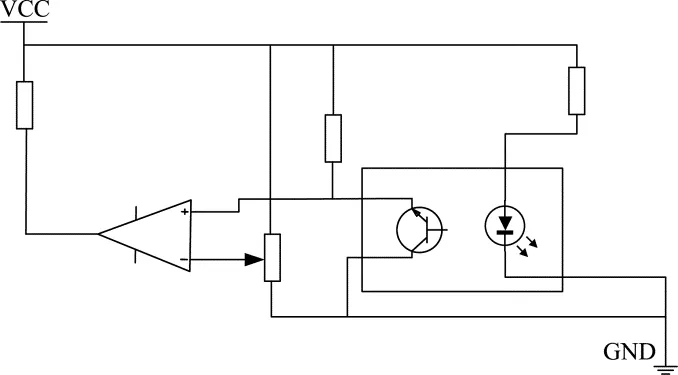
Fig.3 Flowchart of the Working Principle of Laser Tracking
3.3 Buck Module
In order to ensure that the entire power system must be able to fully meet the step-down requirements for normal operation, the DC design scheme of this series of products makes it possible to purchase 12v high-speed rechargeable power sources and power sources on the market. DC step down. Therefore, we mainly use the lm2596 DC voltage drop adjustable linear decompression output module, which has good performance characteristics such as DC linear step-down output and DC voltage drop automatic adjustment, and can easily achieve any output voltage below 37v DC output. current for voltage drop regulation. Fig.4 shows the step-down circuit module based on the lm2596 DC drive adjustable step-down reducer. In order to effectively prevent a large amount of transient DC voltage from occurring in the two input circuits of the step-down module, the front end of the input ground of the module is connected to A step-down capacitor and c1 are respectively connected between the output grounds. Among them, for example,l9 and c3 can be used as first-order low-pass filters,respectively, and the cut-off frequencies are expressed as:
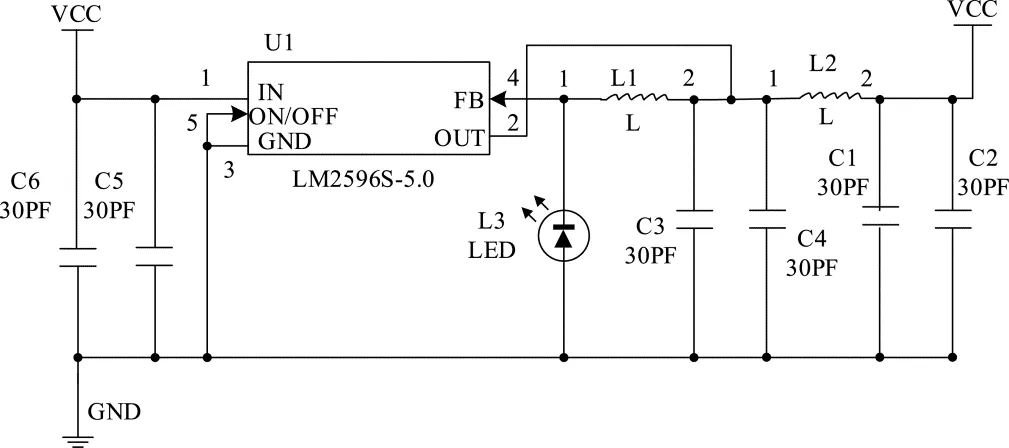
Fig.4 DC Adjustable Step-down Module

3.4 Motor Drive Module
The main function of this bridge-type control chip system is to design an H-bridge control circuit board composed of three combined components of an l298n,a diode and an overcurrent capacitor, which is used to drive the DC protection motor. As shown in Fig.5, each tube outputs a Dl2in4007 diode capacitor, which is used as an overcurrent protection control chip on the rectifier line.
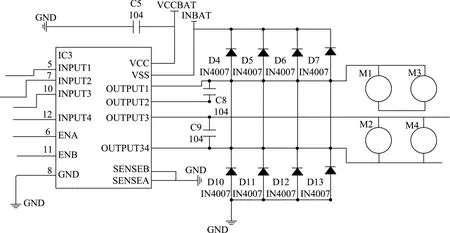
Fig.5 Motor Drive Module
3.5 Design of Ranging Module
The ultrasonic distance measuring device can use the formula to obtain the distance:

The two i/o port trig of the echc-sr04 module can be used as a square wave trigger to measure distance,the module can automatically send 8 square waves of 40khz, and can automatically detect whether there is any ultrasonic trigger signal in the whole module or not There is no return. At the same time, assuming that the module does not have any ultrasonic trigger signal or does not return, echo will trigger it to output a new high level, and the high level automatic duration also refers to the CNC ultrasonic wave from an automatic transmitter node. The duration returned by the module,the high level automatic duration is calculated by the automatic timing method with the automatic timer signal . According to the torque and working distance related information obtained by the detection module of the torque sensor, the numerical control single-chip microcomputer can automatically control the working steering and the maximum speed of the gear-driven generator .
3.6 Design of Obstacle Avoidance Module
This obstacle avoidance control system mainly refers to a car obstacle avoidance control mode using single-channel infrared convection takeover. The car obstacle avoidance automatic control circuit module is the most likely to achieve the main effect of the car obstacle avoidance. The specific structure of the obstacle avoidance control circuit used for the return devices at the left and right ends of the car is shown in Fig.6 below.
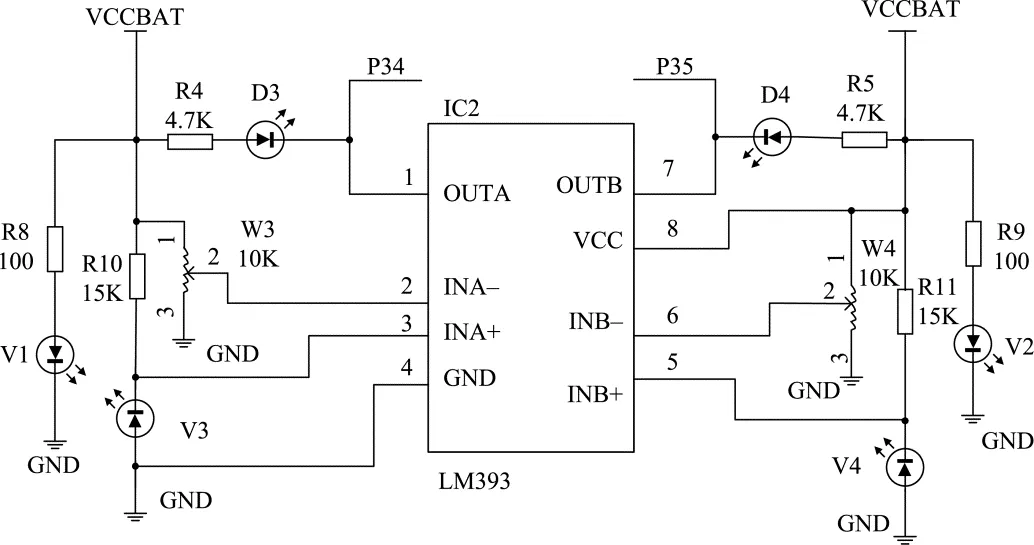
Fig.6 Left and Right Obstacle Avoidance Sensors
3.7 QR Code Navigation
Paste the two-dimensional code containing the coordinate information at equal intervals in the working area of the AGV as the positioning point, and use the camera to scan the code to extract the AGV positioning information and the offset information of the AGV relative to the positioning point. The AGV's path navigation is completed according to the received mission command combined with the positioning information, and the AGV's trajectory is corrected by using the offset information combined with the inertial sensor during the period.
The relative position information between the center of the code point and the center of the AGV body is obtained by performing image processing methods such as edge detection and Hough transform on the QR code image collected by the camera,including the displacement deviation in the horizontal direction and the angle deviation. Correct the pose of the AGV car above the code point, or use it instead of the value measured by the inertial sensor at this moment as the initial deviation when going straight through the code point. In the inter-symbol motion, the inertial sensor is used to obtain the offset angle between the actual motion trajectory and the ideal path of the AGV, and combined with the initial deviation information, the rotational speed of the left and right driving wheels is controlled to achieve a small angle steering to correct the deviation, so that the AGV can smoothly collect the downward movement during the movement. a QR code label.
4 Software Design
This smart car automatically detects the input signals of the sensors in each module in real time, and uses a photoelectric sensor to automatically realize the tracking, that is, to avoid obstacles through the road infrared, and use the hc-sr04 module to automatically realize ultrasonic ranging. All the collected data information is sent to the single-chip microcomputer,so that the car can automatically make the correct driving path . The flow chart is shown in the Fig.8.

Fig.8 Main Program Flowchart
This system adopts the dual-channel infrared pairing tube facing obstacle avoidance mode, and a HJ-IR2 infrared obstacle avoidance module is installed at the left and right ends of the trolley, so as to ensure the obstacle avoidance effect. When the left sensor detects an obstacle, immediately let the car turn left to go back, and turn right to move forward; when the right sensor detects an obstacle, immediately let the car turn right to go back, and turn left to move forward; when no obstacle is detected on both sides The car keeps moving forward, and the subroutine flow of obstacle avoidance is shown in Fig.9.
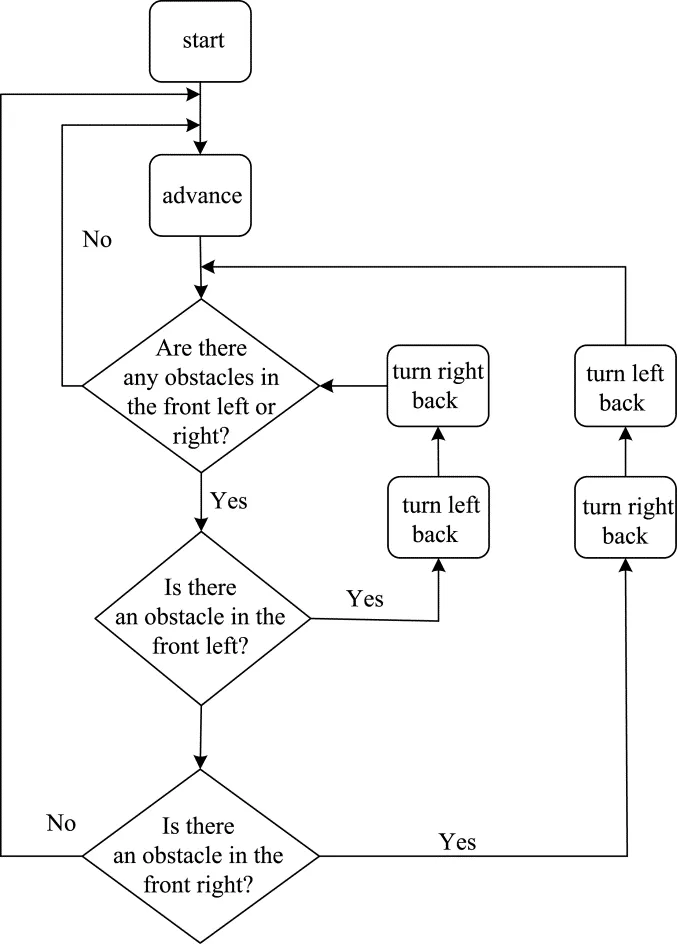
Fig.9 Obstacle Avoidance Subroutine Flowchart
5 Overall Design
5.1 Way of Working
The overall design of this paper is as follows. In a complex warehouse environment, using multiple high-quality and low-cost sensors, using a combination of multiple navigation methods, and giving full play to the advantages of each navigation method in specific scenarios, to achieve low-cost, basic and efficient intelligent warehousing, with goods entering Libraries as examples:
1. Allocate the vacant cargo space, place the cargo on the track, and the track rotates to deliver the cargo to the weighing area. After reloading and scanning the code,the WMS system finds the spare shelf goods located in the warehouse in this area, and stores the barcode number of the goods according to the nearest container.
2. Allocate warehousing tasks. The WMS system sends instructions to the ASS system to store the goods on the designated shelves. The ASS system plans a global path to the designated shelves, assigns warehousing tasks, and waits for idle AGVs to accept the tasks. At the same time, the drum line continues to rotate, conveying the goods to the end of the drum line,waiting for the idle AGV trolley to get on the car.
3. The idle AGV car receives the warehousing task, reports the current position, and navigates to the warehousing according to the preset trajectory. On the track line of the warehouse, it is precisely docked with the track line, and the goods are extracted and stored.Then drive to the laser navigation area, and use the laser navigation to reach the narrow corridor between the two rows of shelves where the designated cargo space is located. When the AGV trolley stops, the QR code enters the field of view of the camera at the bottom of the trolley, and then the camera. The program starts, and the goods are delivered to the designated shelf and QR code through the integrated ribbon navigation method.
This article is designed. The main advantages are as follows: only laying QR codes at turning points. It is more convenient to measure, lay and transform by reducing the number of QR codes. It is more convenient to integrate the ribbon and QR code navigation methods than to use QR codes alone. The integrity of the fuselage itself and the ground, the ribbon uses ordinary black tape, the price is low, the installation is simple, and there will be no AGV deviation scanning that is easy to occur when using the QR code alone. No QR code issues. Ribbon and QR code recognition use the same camera without adding cost. The wide passage adopts laser navigation,without the need to renovate the site, the path planning is more convenient, and the connection is smooth.Using two-dimensional code positioning and navigation, the positioning accuracy is high. This combined navigation method is basically applicable to all complex indoor scenes. For simpler scenes, only need to increase or decrease the navigation method.
5.2 AGV and ASS Communication Instructions
As a client, AGV sends data to ASS (server) by means of short connection. AGV and ASS use a question-and-answer method, which is sent every 2s(when a change in code value is detected, and a task completion command is received, it needs to be sent immediately. ), after the AGV sends the data, the ASS replies with the data. If there is a network packet loss problem or an internal processing problem in the program that causes the AGV to send data and the ASS does not reply, the AGV will interrupt the connection after 10s, and then the AGV will try to re-establish a connection with the ASS and send data again.
5.3 Model Display
This paper mainly analyzes and selects some common 3D product modeling application software in engineering design, such as solidworks. Solidworks provides you with a complete set of dynamic operation interface of 3D product modeling software, which reduces redundant modeling dialog boxes and simple The engineering design operation steps, and the use of solidworks' 3D part configuration and product management operating system software can directly allow you to perform sequential transformation and logical combination through different product parameter types in a document containing cadb, and derive and generate different product types The three-dimensional parts or three-dimensional assemblies are in line with the needs of the paper for the research on AGV trolleys.
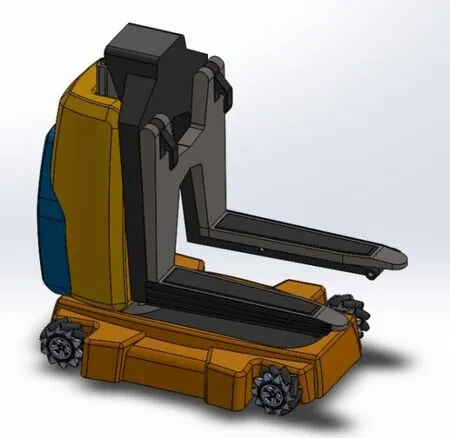
Fig.10 Model Simulation Results
6 System Test
This smart car automatically detects the input signals of the sensors in each module in real time, and uses a photoelectric sensor to automatically realize the tracking, that is, to avoid obstacles through the road infrared, and use the hc-sr04 module to automatically realize ultrasonic ranging. All the collected data information is sent to the single-chip microcomputer,so that the car can automatically make the correct driving path . This single-channel control obstacle avoidance system refers to the complete use of single-channel infrared convection double-tube facing forward obstacle avoidance control mode, and a single-channel hj-ir2 infrared convection is installed on each of the left and right sides of a car. Double-tube forward obstacle avoidance control module, so that we can effectively achieve the correct effect of ensuring the correct obstacle avoidance. At this time, when the car sensor on the left automatically detects an obstacle and sees an obstacle, it will automatically automatically Let a car turn left and turn right to move forward and back, turn right and turn left to move backward; at this time, when a car sensor on the right is automatically detected and sees an obstacle on the left,it will automatically let a car The steering rod of the new trolley turns right and goes backward, and the steering rod of the trolley on the left moves forward; at this time, when no one on the left and right sides is detected to issue any obstacle, the trolley will automatically continue to turn and move forward to avoid it.
6.1 Infrared Tracking Module Test
Infrared tracking module test. If the natural light is too strong, the infrared receiving tube's ability to receive infrared rays will deteriorate. Therefore, the infrared tracking module is selected for experimental testing in an indoor environment, which is matched with the storage environment. Debugging prepares the experimental test device. During the test, the test action must be light, the amplitude should be small, and the potentiometer should be fine-tuned, otherwise the sensitivity of the infrared to the tube is adjusted too high and the black line cannot be recognized. The test results are shown in the Table 1.
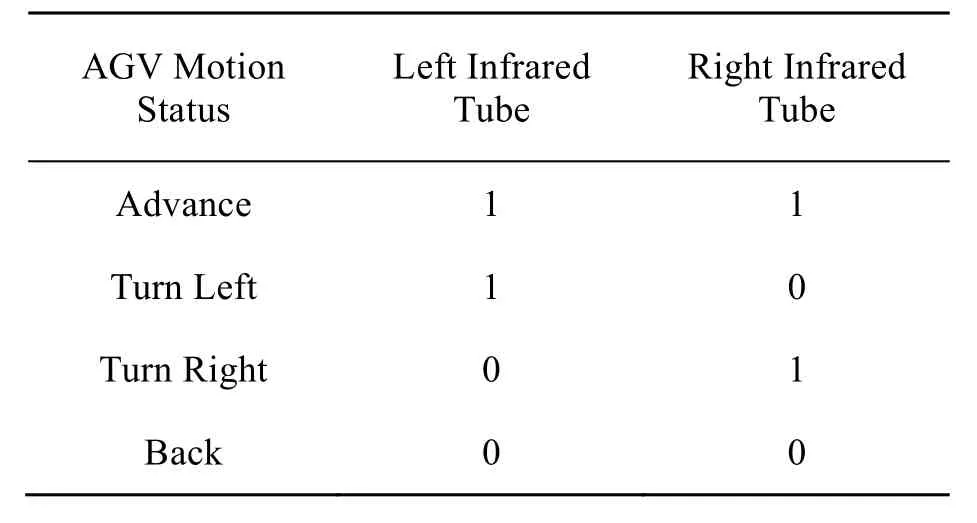
Table 1 Infrared Tracking Module Test Data
The test results show that the infrared tracking module test module can realize the tracking function and control the motion requirements of the vehicle body.
Ultrasonic Obstacle Avoidance Module Test
The test environment is selected indoors, and obstacles are set up with moderate areas and grooves with concave and convex surfaces. Debug the equipment, the test results are shown in Table 2.

Table 2 Ultrasonic Module Test Data
From the test data in Table 2, it can be seen that the test distance of the ultrasonic obstacle avoidance module is almost the same as the actual ruler measurement distance, and the test error is less than 1%.Therefore, the ultrasonic obstacle avoidance module can realize the functions of distance measurement and obstacle avoidance. Finally, the warehousing logistics handling robot system is fully debugged. Do this in two steps. The first step is to let the warehousing and logistics handling robot carry the goods, automatically track it, and set up obstacles during the test. Tests have shown that the warehousing and logistics handling robot can deliver goods to a specified location according to a specified path, and can turn to avoid obstacles when encountering obstacles. In the second step of the test, set the small fault to be unable to be automatically tracked, connect the Android mobile phone QX Bluetooth controller APP, and control the driving path of the warehouse logistics handling robot.During the test, observe the stability and adaptability of the warehousing and logistics handling robot to make the transportation work safe and reliable. After many experiments, it has been proved that the warehousing and logistics handling robot can accurately complete the task of cargo transportation on various complex designated routes.
7 Application Scenario Assumption
With the rapid rise of e-commerce companies,express logistics related companies have also entered a period of rapid development. Coupled with the update of emerging technologies such as artificial intelligence,the pace of construction of intelligent warehousing systems towards high efficiency, unmanned and intelligent direction has been accelerated. . At present,most warehousing companies are in the stage of automated warehousing and integrated automated warehousing. With the innovation of the Internet industry, radio frequency identification, robots, sensors and other technologies, a large number of warehousing equipment is connected to the Internet through sensor technology, and the connection between warehousing equipment promotes warehousing interconnection,making smart warehousing usher in rapid development.In addition, with the increasing cost of land use fees and labor costs, the traditional manufacturing industry's investment in warehousing has also increased accordingly, reducing corporate costs and increasing corporate benefits have gradually become the focus of future warehousing industry development.In recent years, due to the advantages of AGVs such as good reliability, high transportation efficiency, fully automatic operation, good adaptability to materials,low labor costs, and convenient interface with other information systems, AGV-based intelligent scheduling control systems are gradually becoming more and more popular in intelligent warehousing. get applied.
8 Conclusion
The design of this project takes the microcontroller ARDUINO as the main control chip.L298n can be used to drive motor, photoelectric sensor can realize tracking, hj-ir2 can realize infrared obstacle avoidance, hc-sr04 can realize ultrasonic ranging. By analogy, the software and hardware design of the system, the development program and work flow chart of the system, and the software application design of the car using C++ as the basic programming language are completed. After debugging and simulation, the results show that the software system has been fully integrated, and can directly realize various applications such as automatic forward, backward, steering,tracking, QR code positioning, obstacle avoidance,ultrasonic automatic ranging and other applications in intelligent AGV driving. It has strong reliability and good application marketability and application development prospects.
Acknowledgment
Sources of funds: Qingdao University of Science and Technology 2021 College Student Innovation Training Program (S202110426004)
- Instrumentation的其它文章
- Iris Segmentation Based on Matting
- Research on Hand-eye Calibration Technology of Visual Service Robot Grasping Based on ROS
- Target Path Tracking Method of Intelligent Vehicle Based on Competitive Cooperative Game
- Research on Surface Defect Detection Technology of Wind Turbine Blade Based on UAV Image
- Time Symmetry Analysis of Nonlinear Parity Based on S-P Compensation Network Structure
- Non-destructive Testing Method for Crack Based on Diamond Nitrogen-vacancy Color Center

